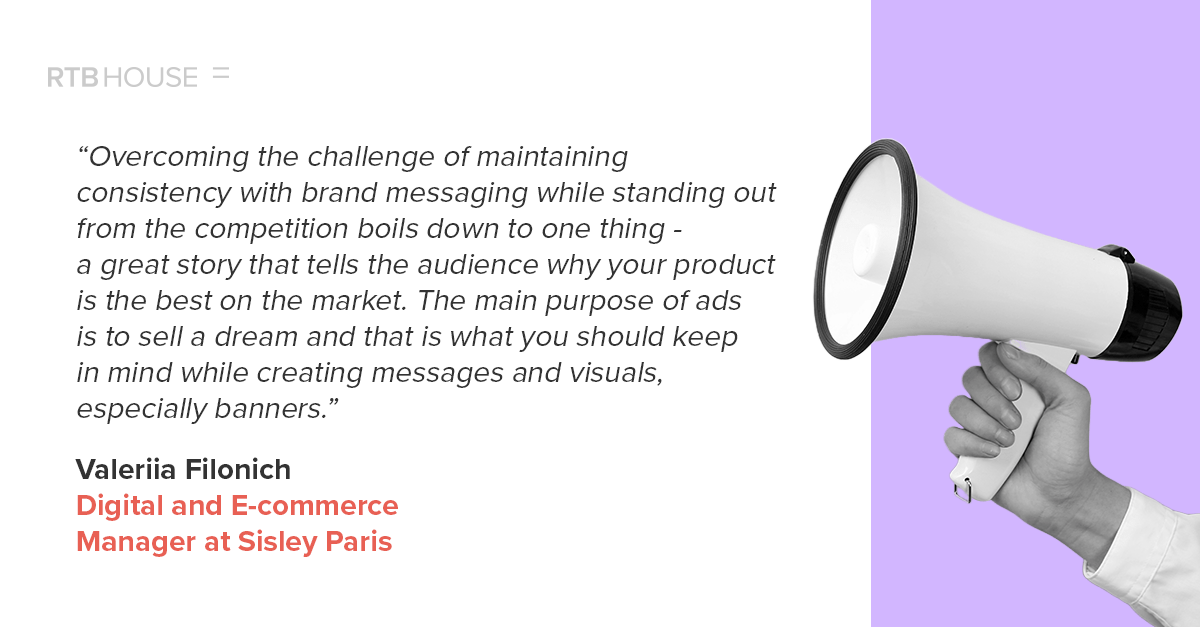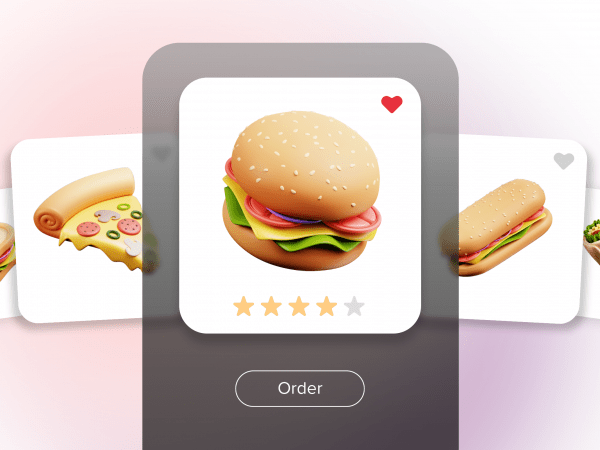Last Updated on: 24th May 2024, 09:00 pm
Brand messaging is not an exact science – but still many campaigns fail to meet their objectives despite the presence of strong creatives.
For an expert perspective on the most important considerations when designing effective creatives we asked Valeriia Filonich, Digital and e-Commerce Manager at Sisley Paris to outline some of the processes that can be put in place to maximise the chances of success.
In this article you will learn:
- How to grab the consumer’s attention
- Why clickbait is counter-productive
- How to guide consumers along the purchasing journey
- Why pre-launch testing is important
Table of Contents:
Even before the turmoil created by the pandemic, marketing teams around the world were faced with the challenge of doing more with less, as headcount and resources were cut while expected output increased. In this context, the role of creatives has become more important than ever.
Creative teams are rising to this challenge by increasing their productivity, using new skills and technologies and applying their creativity to areas such as problem solving.
Stand out

Valeria addresses what brands should focus on first: “Overcoming the challenge of maintaining consistency with brand messaging while standing out from the competition boils down to one thing – a great story that tells the audience why your product is the best on the market,” she says. “The main purpose of ads is to sell a dream and that is what you should keep in mind while creating messages and visuals, especially banners.”
According to Valeriia, the use of celebrities or bloggers in creative materials is becoming less useful as consumers are increasingly unwilling to follow their advice due to ‘celebrity fatigue’ and limited confidence in the value of their endorsement of specific products.
“Consumers also dislike flashy ads with clickbait like ‘get something for free’ or those with disclaimers which show the offer is only available subject to a load of conditions,” she says.
Media planning – specifically the frequency of ads and where they are placed – is also important.
Words matter
Brands operating on an international level need to consider the variable length of the same message written in different languages. This is another area where the professional translator comes into their own as they will be able to suggest alternative wording that fits within the creative template and most importantly, fit the target audience best regardless of their location.
Consumers (especially the younger demographic) are increasingly making purchasing decisions based on a brand’s commitment to diversity, equity and inclusion. At the creative level, this means using imagery that reflects the product’s customer base and language that addresses the diversity of the target group, for example reflecting more fluid gender roles.
Many creatives will instinctively avoid the use of technical terms for fear of alienating less knowledgeable consumers. However, if you are promoting a specialized product to a specific audience there is nothing wrong with throwing in a bit of jargon.
Time-sensitive
It is important that creatives reflect where the consumer is in their purchasing journey, whether they are simply looking for information or planning to make a purchase. This approach is often effective in generating repeat website traffic by only showing the recipient offers or details of products in which they had previously expressed an interest.
“At the initial stage we work on awareness, building a story around the product to reach as wide an audience as possible,” says Valeriia. “Then we move to consideration, talking about the USPs our product has, communicating all the benefits compared to competitors, and pushing the audience to consider our product. Finally, the purchase and loyalty stage focuses on offers and customer services that offer real value for consumers.”
Not being able to adjust the message to the audience can have the opposite of the intended effect. That is why it is so important to know what your audience is and understand their preferences.
User input
Customer testimonials are a valuable element of an effective creative, but they need to be positioned for maximum impact. Most merchants place them on the conversion page to give customers an extra nudge to proceed to purchase.
User generated content can also help to make your creative stand out from the crowd. Many consumers want to feel part of a community and are happy to share their experiences of using a product through social media. Best of all, this content costs nothing to produce – all you need is the consumer’s permission to use it.
Regardless of the nature of the campaign, creatives should be tested on a regular basis to measure how effective each version is – not just relative to other messages sent by the company, but compared to other campaigns. This ensures that they are benchmarked against effective creatives rather than just being the best of a bad bunch.
The same principle should be applied to visual content. Video content might look good during the editing process, but it is important to view it on a device from a number of different angles and even under a variety of lighting conditions to make sure it is easily viewed in dark mode, for example.
Measured approach
The marketing world is littered with examples of creatives that were expensively assembled but only served to alienate consumers, undermining months or even years of good work. One possible solution is to test creatives before you unleash them on the consumer to ensure they are getting the message across in a way that is understandable and compatible with brand values.
“There is always a lot of preparation and analysis, especially for a new product launch,” says Valeriia. “As for the creative design process, the approach is the same – analysis of competitors and audience preferences. For example, A/B tests are a must.”
Increasingly digital lifestyles have reduced our attention spans, meaning that successful marketing messages have to not only catch the recipients’ attention within no more than eight seconds, but also make them want to engage with the content.
Working with RTB House increases the effectiveness of your messaging thanks to our use of intelligent algorithms based on Deep Learning – which are able to tailor a personalized message to the recipient – and high quality creatives that stand out from other messages.
Additionally, RTB House is able to provide the best placement for our clients’ advertisements through our network of the world’s largest and most popular publishers. If you want to learn more about our solutions and the opportunities we create, please don’t hesitate to contact us.




